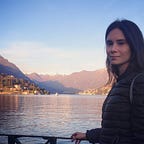Mapping from scratch — part 1
Mapping a new theme park that grows week by week with outdated satellite imagery was the latest project I thought of and said "why not?".
In order to create the map I knew there were many tools I could rely on, but I never actually had to, until now. I remembered a past workshop in Dar es Salaam, Tanzania with the Dar Ramani Huria team, so I consulted with a couple of friends that help in humanitarian mapping in order to make a plan to map the park.
The plan involved the following steps:
- Use a drone to create an orthophoto with OpenDroneMap.
- Use the orthophoto to draw lines, nodes, polygons, and create relations in OSM.
- Use Mapillary to record a street view of the park.
- Use Field Papers to gather details that could be lost from an aerial view and add them to OSM.
- Integrate all of the above into Mapbox for a nice user experience.
Drone Flight
For the flight I used a Phantom 3 and made an automatic flight plan over the park area I wanted to map (about 9ha), with an altitude of 230ft (aprox. 70m) using the DroneDeploy DJI app in structures mode; keeping the thumb in the brake during all the flight time "just in case".
I got 93 nice geo-referenced photos that were then the input for OpenDroneMap.
For larger areas one would have to consider the flight time vs battery life and perhaps use a fixed wing drone from a higher altitude. As this was my first flight, it was good that the area was small, allowing some nice detail in the output.
OpenDroneMap
There are many options to install OpenDroneMap. I went for installing webODM from github, since I was familiar with the command line, django, and docker, and I figured it was better for me to have a graphic interface if that was possible, which thanks to the ODM team, it is!
I cannot stress enough how great the ODM project is: being affordable, scalable, and transparent thanks to its openness.
If you don't feel like dealing with commands and docker… There are paid installers that ease this step.
The only recommendation here to highlight in order to install webODM is to make sure you have an acceptable internet connection while installing, otherwise the fixtures (a django thing) will not load completely and the installation will fail. Remove files and start over if this occurs.
After that, ODM was up and running and ready to process my photos. Yas!
As the park has lots of trees, the number of features for ODM was not very high so I used the default fast-orthophoto settings and in a couple of hours it was done and ready to export to OSM to start drawing.
PS: the theme park is an equestrian park. Horses don't like drones.
